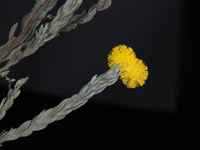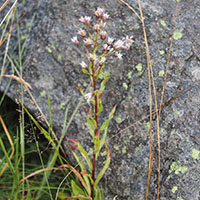BT25001Seedling survival and growth phenology in a monocarpic tree species, Cerberiopsis candelabra (Apocynaceae)
Cerberiopsis candelabra, a species endemic to New Caledonia, is one of the world’s rare monocarpic trees. This canopy tree flowers once and subsequently dies. The survival and growth rate of seedlings are significant preconditions for the maintaintenance of this strategy in tropical forests. We found that this species has a high survival rate to maintain high seedling density and we show that seedling growth is continuous but strongly responsive to climate seasonality. Image by authors.



















